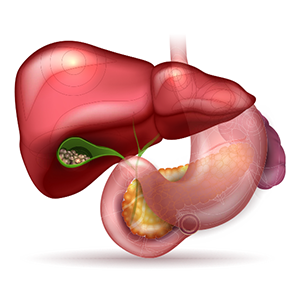
Gallstones

Gallstones
Gallstones are small, hard deposits that form in the gallbladder, a small organ located under the liver that stores bile. Here's an overview:
Types of Gallstones
1. Cholesterol stones: Most common type, composed of cholesterol and other substances.
2. Pigment stones: Composed of bilirubin and other substances, often associated with hemolytic anemia or liver disease.
3. Mixed stones: Combination of cholesterol and pigment stones.
Causes and Risk Factors
1. Genetics : Family history of gallstones.
2. Obesity : Excess weight increases risk.
3. Diet : High-cholesterol, high-fat, or low-fiber diet.
4. Age : Risk increases with age.
5. Gender : Women are more likely to develop gallstones.
6. Pregnancy : Hormonal changes increase risk.
7. Liver disease : Certain liver conditions increase risk.
Symptoms
1. Abdominal pain : Sudden, severe pain in the upper right abdomen.
2. Nausea and vomiting : May occur with pain.
3. Fever : May indicate infection.
4. Jaundice : Yellowing of skin and eyes (in severe cases).
Diagnosis
1. Ultrasound : Imaging test to visualize gallstones.
2. Computed Tomography (CT) scan : Imaging test to rule out other conditions.
3. Endoscopic Retrograde Cholangiopancreatography (ERCP) : Imaging test to visualize bile ducts.
Treatment
1. Watchful waiting : Monitoring symptoms and gallstone size.
2. Medications : Ursodiol (ursodeoxycholic acid) to dissolve cholesterol stones.
3. Surgery : Laparoscopic cholecystectomy to remove the gallbladder.
4. ERCP : To remove stones from bile ducts.
Complications
1. Infection : Bacteria can infect the gallbladder or bile ducts.
2. Inflammation : Gallstones can cause inflammation of the gallbladder or bile ducts.
3. Blockage : Gallstones can block the bile ducts, leading to jaundice or pancreatitis.
4. Pancreatitis : Inflammation of the pancreas, which can be life-threatening.
